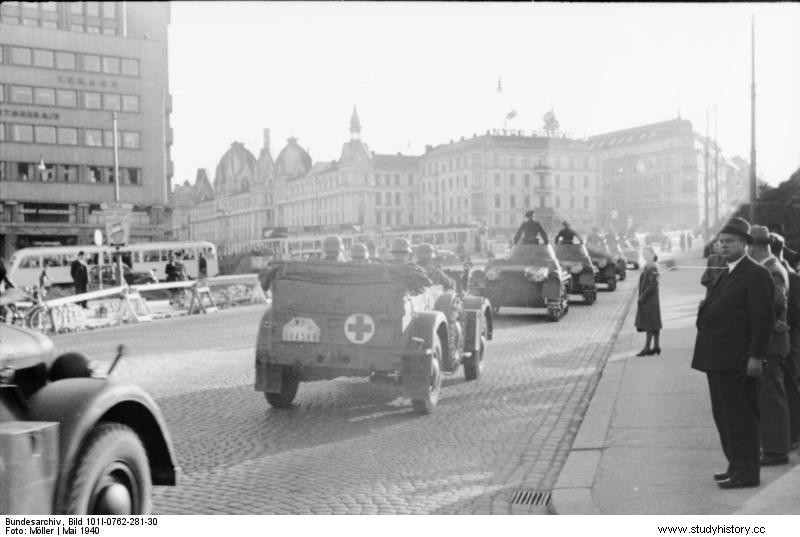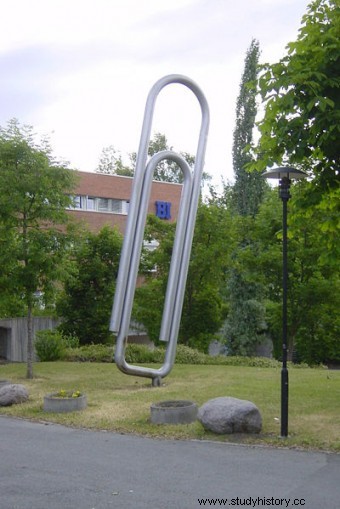During World War II, Norway declared itself neutral but Nazi Germany considered its occupation a strategic and economic necessity. On April 9, 1940 the Wehrmacht attacked Luftwaffe coastal defenses and raids they managed to disable the Norwegian air force in just 48 hours. Troops from the United Kingdom and France came to support Norway, but they could do nothing in the face of German superiority… On June 10, the Norwegian army capitulated in Trondheim. KingHaakon VII , who had led an itinerant government during the war, refused to recognize the capitulation and left the country for London. The government was taken over by the Reichskommissariat Norwegen (Reich Commissioner in Norway), with Josef Terbovenque to the front, acting as a puppet government under Hitler's orders.

German troops enter Oslo
Apparently, in Norway –I suppose something had to do with the fact that the Norwegians complied with the canons established by the Aryan race – they wanted to win over the population with more subtle methods such as trying to instruct clerics, school teachers and university professors so that they would be the ones to sell the bonanzas of Nazi ideals… those who refused suffered the consequences. At the same time, anti-Semitic laws were passed, resulting in the deportation of 700 Norwegian Jews to Auschwitz, in addition to other hidden crimes compared to the brutal mass murders that were carried out in other European countries.
As in all occupied countries, resistance groups arose here too. The most important was born among the students of the University of Oslo and as a symbol of their resistance to the occupation they chose a clip . Why a clip? It was such an insignificant object that it would not attract attention, anyone could get it, it represented the union of the Norwegians as it holds loose papers together and, in addition, it was a Norwegian invention... or so they thought.

Monument Clip Oslo
The Norwegians thought that the inventor of the clip had been their countryman Johan Vaaler . In fact, Vaaler patented something similar to the clip in the United States and Germany in 1901, since there was no legislation in this regard in Norway, but he had some defects that made it not be sold and his patents expired. The clip used by the university students was the so-called Gem clip that was already circulating in the United States and Europe since the 1870s manufactured by the company Gem Manufacturing .
The Germans shrugged it off - what harm could a simple clip do? - until they learned that it represented the Norwegian people's resistance against Nazi rule. The clips were banned under penalty of death.
